prometheus 四种数据类型学习及测试
安装
1)从官网下载对应版本的二进制压缩包并解压
2)新建prometheus.yml 文件,静态指定抓取本机的9091端口,设置采样时间2秒1次,方便一会测试。
scrape_configs:
- job_name: 'definejob'
scrape_interval: 2s
static_configs:
- targets: ['localhost:9091']
3)执行 ./prometheus --config.file=./prometheus.yml, config路径是上一步编写的文件。
四种数据类型
1)Counter
单调递增的数据,可用于统计API的调用次数,在服务重启后,变为0。编写测试用例,每两秒钟增加一次Counter。
package main
import (
"net/http"
"time"
"github.com/prometheus/client_golang/prometheus"
"github.com/prometheus/client_golang/prometheus/promauto"
"github.com/prometheus/client_golang/prometheus/promhttp"
)
var (
api_request = promauto.NewCounter(
prometheus.CounterOpts{
Name: "api_request",
})
)
func main() {
http.HandleFunc("/", func(res http.ResponseWriter, req *http.Request){
api_request.Inc()
res.Write([]byte("it's ok!"))
})
go func() {
// 模拟访问浏览器
time.Sleep(time.Second)
client := &http.Client{
Timeout: time.Duration(10 * time.Second)}
for i := 0;i < 2000; i++{
req, err := http.NewRequest("GET", "http://127.0.0.1:9091", nil)
if err != nil {
panic(err)
}
response, err := client.Do(req)
if err != nil {
panic(err)
}
if response != nil {
response.Body.Close()
}
time.Sleep(2 * time.Second)
}
}()
http.Handle("/metrics", promhttp.Handler())
http.ListenAndServe(":9091", nil)
}
访问localhost:9090,Status->Targets
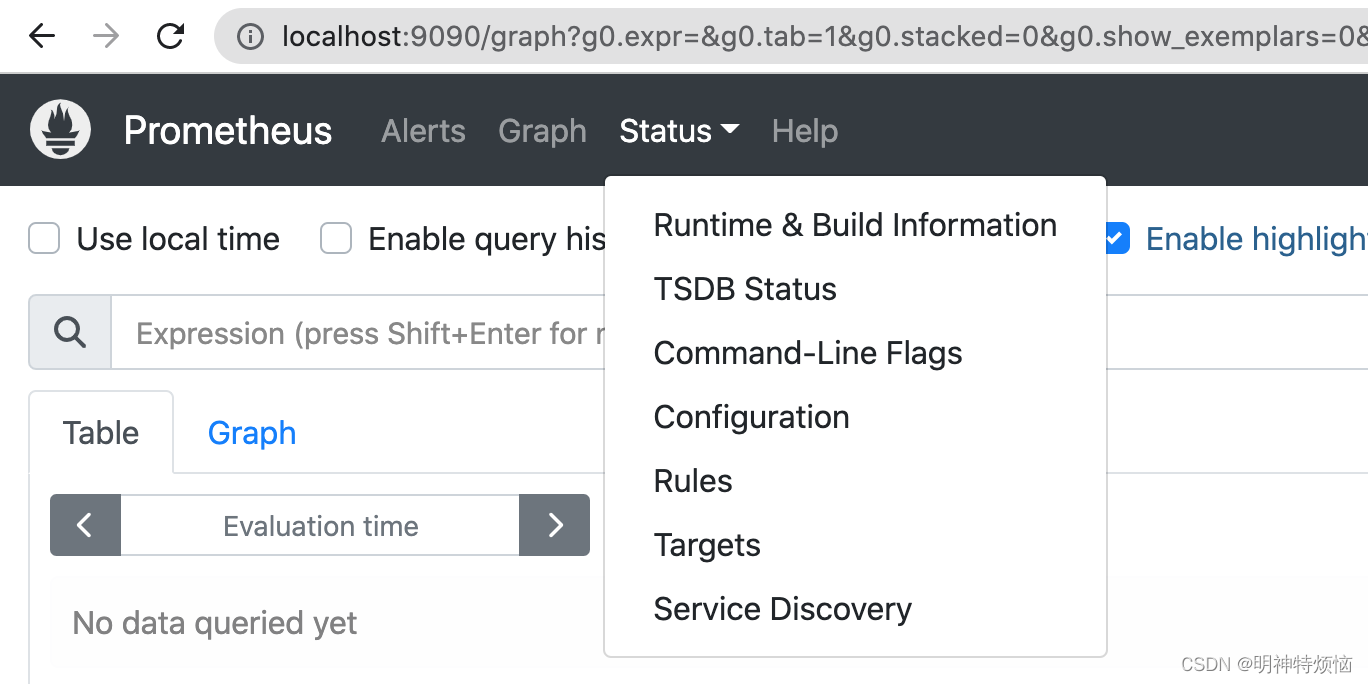
可以看到应用被成功监控到。

查询api_request Counter正在逐渐增长

使用瞬时向量绘制图标
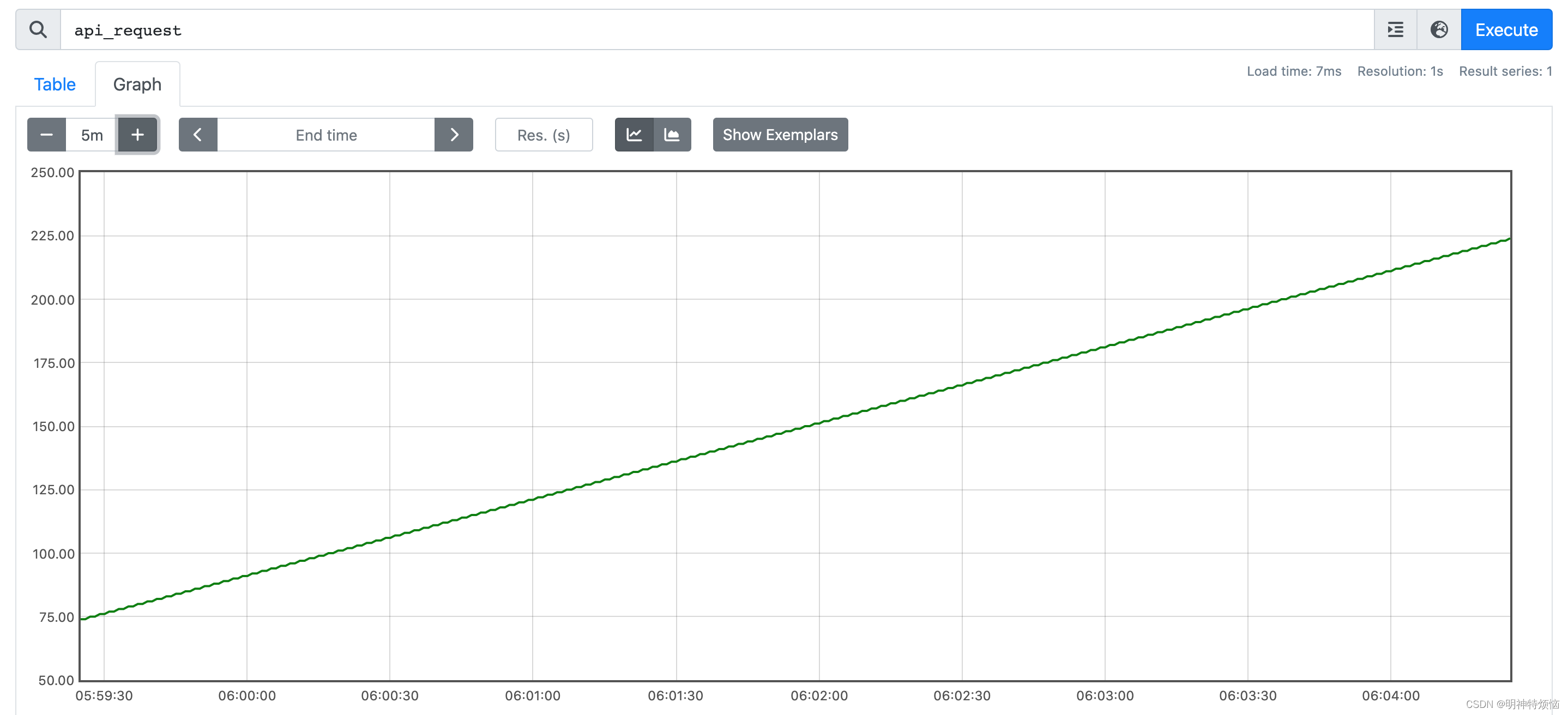
查看变化率,可以看出基本在0.5 上下波动,我们每两秒Counter+1, 平均一秒增加0.5
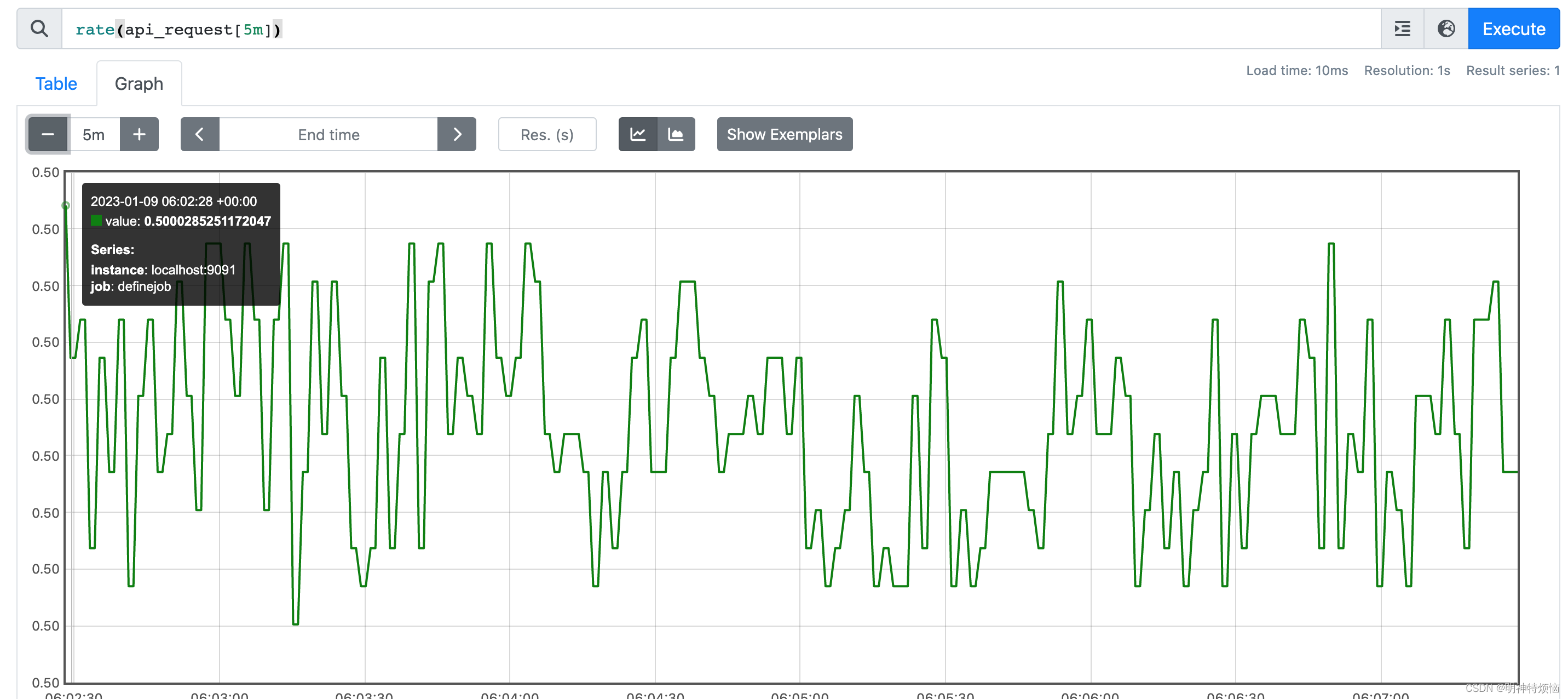
2)Gauge
仪表盘,用于统计一组变化的数字,例如内存使用、CPU使用率等。这里举例统计服务端维护的session个数。
package main
import (
"math/rand"
"net/http"
"time"
"github.com/prometheus/client_golang/prometheus"
"github.com/prometheus/client_golang/prometheus/promauto"
"github.com/prometheus/client_golang/prometheus/promhttp"
)
var (
session_count = promauto.NewGauge(
prometheus.GaugeOpts{
Name: "session_count",
})
)
func main() {
go func() {
for i := 0;i < 2000; i++{
session_count.Set(float64(rand.Intn(1000)))
time.Sleep(2 * time.Second)
}
}()
http.Handle("/metrics", promhttp.Handler())
http.ListenAndServe(":9091", nil)
}
查看一分钟内session变化

将上面的各瞬时向量绘制成曲线
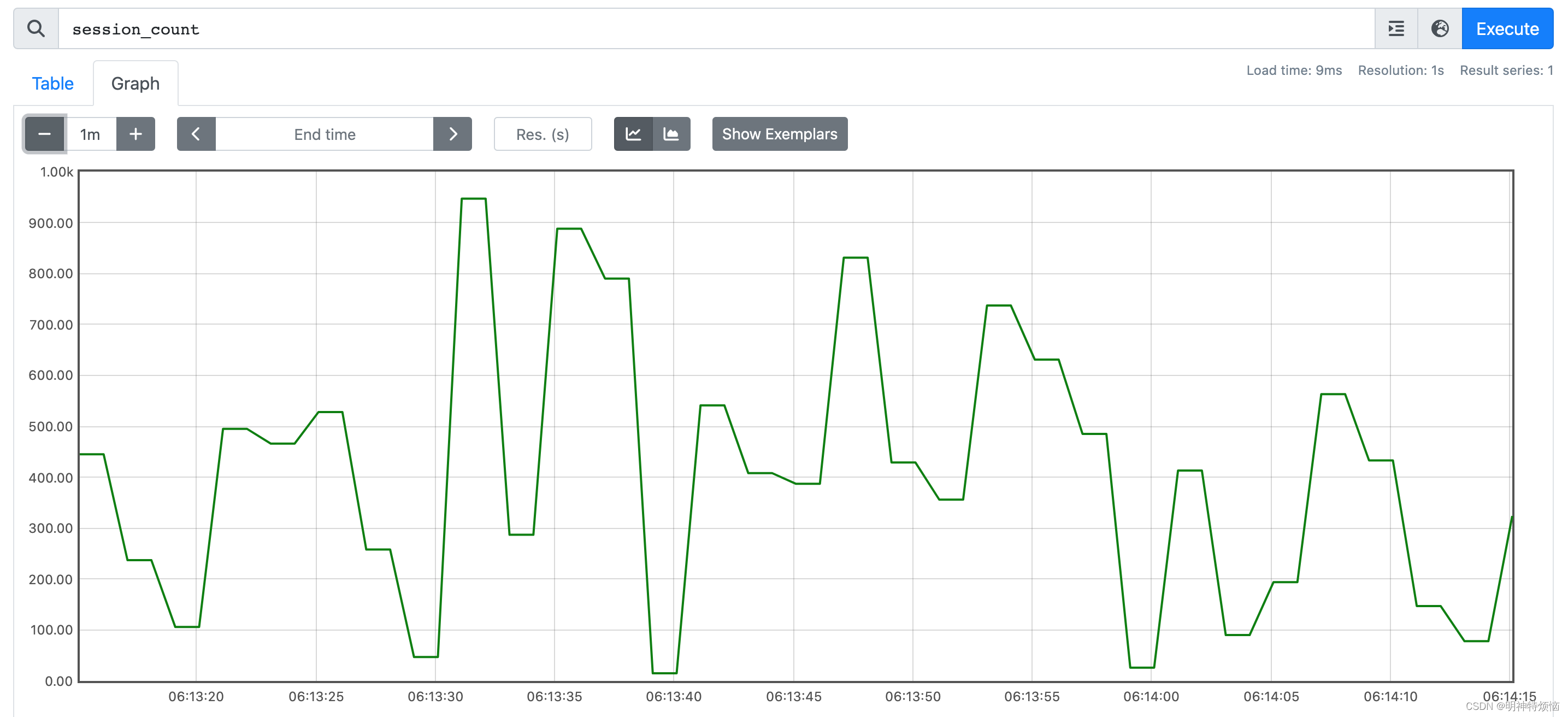
查看增长率,由于随机数据,增长率变化很大
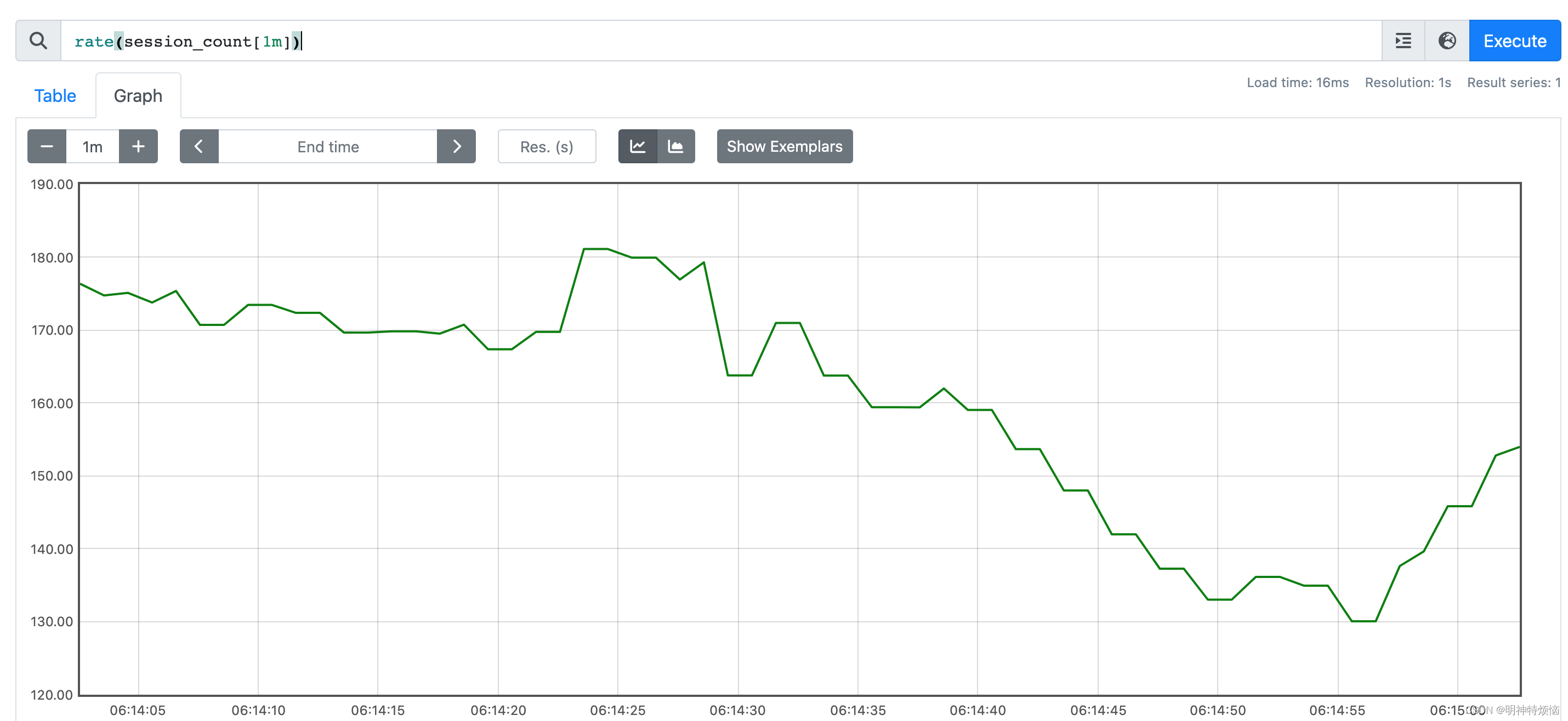
3)Histogram
直方图,将数据范围划分成多个桶bucket,每个桶存储指定范围的数据。案例桶记录请求响应时间,分成100毫秒以下,100 ~ 800毫秒,800 ~ 1000毫秒,1000毫秒以上
package main
import (
//"fmt"
"github.com/prometheus/client_golang/prometheus"
"github.com/prometheus/client_golang/prometheus/promauto"
"math/rand"
"net/http"
"time"
"github.com/prometheus/client_golang/prometheus/promhttp"
)
var (
http_request_duration_seconds = promauto.NewHistogram(
prometheus.HistogramOpts{
Name: "http_request_duration_seconds",
Buckets: []float64{
.1, .8, 1},
})
)
func main() {
http.HandleFunc("/", func(res http.ResponseWriter, req *http.Request){
now := time.Now()
time.Sleep(time.Duration(rand.Intn(1000)) * time.Millisecond)
http_request_duration_seconds.Observe(time.Since(now).Seconds())
res.Write([]byte("it's ok!"))
//res.WriteHeader(http.StatusOK)
})
go func() {
// 模拟访问浏览器
time.Sleep(time.Second)
client := &http.Client{
Timeout: time.Duration(10 * time.Second)}
for i := 0;i < 2000; i++{
req, err := http.NewRequest("GET", "http://127.0.0.1:9091", nil)
if err != nil {
panic(err)
}
response, err := client.Do(req)
if err != nil {
panic(err)
}
if response != nil {
response.Body.Close()
}
time.Sleep(2 * time.Second)
}
}()
http.Handle("/metrics", promhttp.Handler())
http.ListenAndServe(":9091", nil)
}
Histogram会生成三类汇总数据
- 指标名字_bucket bucket 的累计计数器
- 指标名字_sum 观测值总和
- 指标名字_count 抓取总样本量
查看桶数据

查看抓取总数

查看每秒钟平均响应时间
rate(http_request_duration_seconds_sum[5m])/rate(http_request_duration_seconds_count[5m])
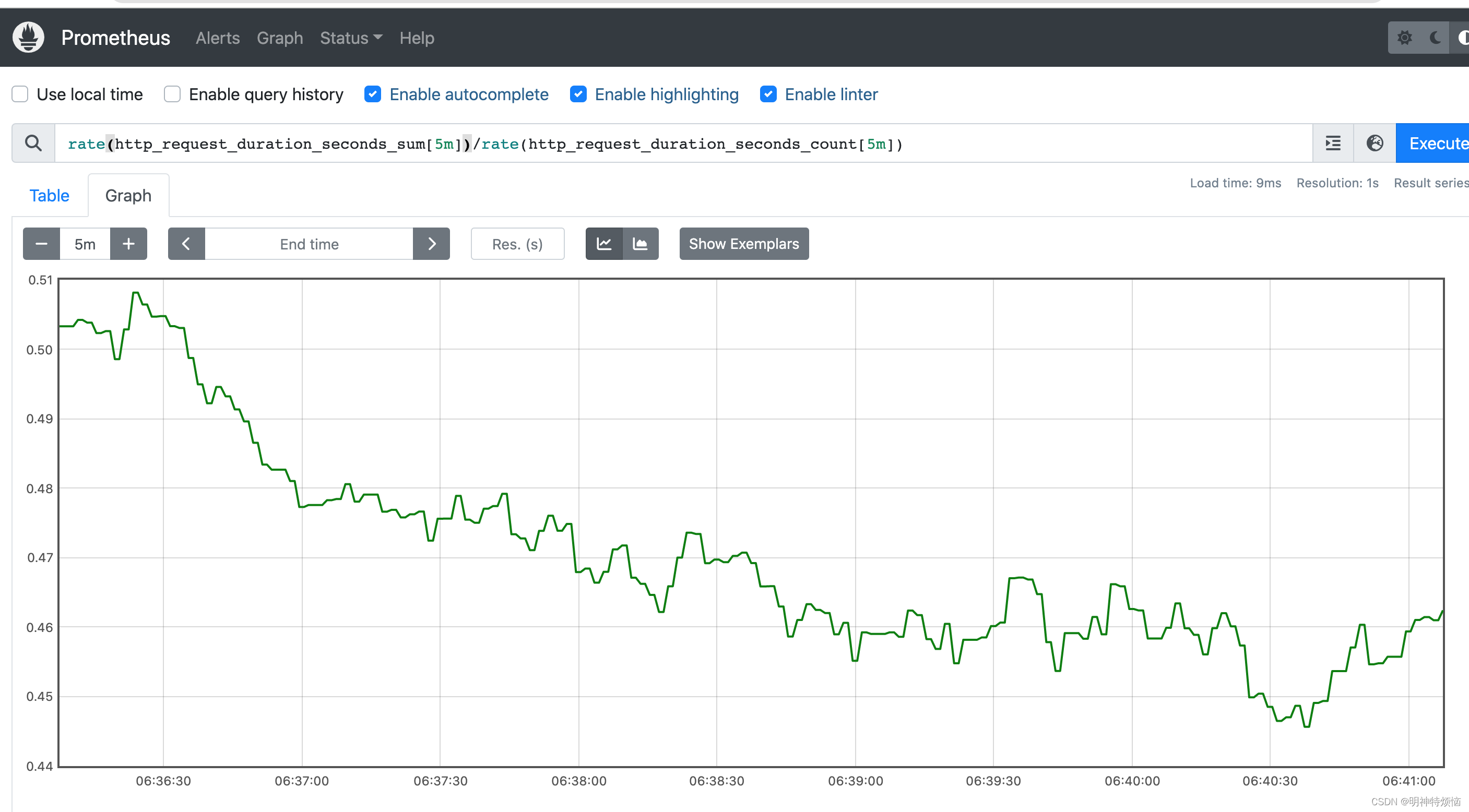
分位数
通过上面我们我们了解到,每个桶内的数据总量,很容易可以得出我们要的99%的请求响应时间在哪个桶里,假设有100个请求,其中第99个在最后一个桶,可是这个桶是记录800 ~ 1000毫秒范围,可我们并不知道排序第99的请求具体是多少毫秒,直方图假设800 ~ 1000毫秒桶是线性存储,来估算响应时间。
统计95分位,即95%的请求的响应时间。
histogram_quantile(0.95,sum(rate(http_request_duration_seconds_bucket[10m])) by (le))
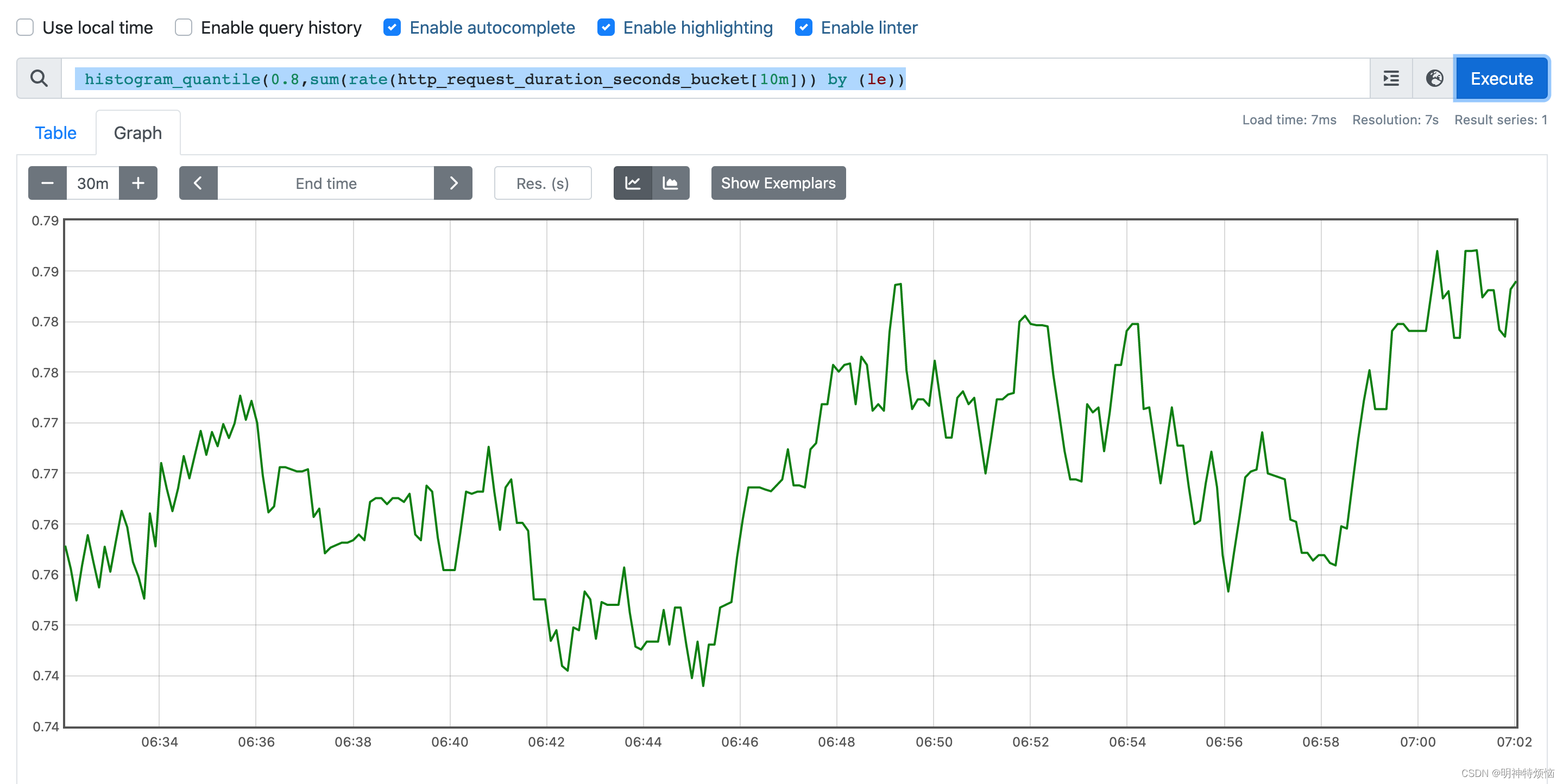
4)Summary
摘要,专门为精确计算分位存在。这里不详述,详情可见https://blog.csdn.net/hanjinjuan/article/details/121228892。